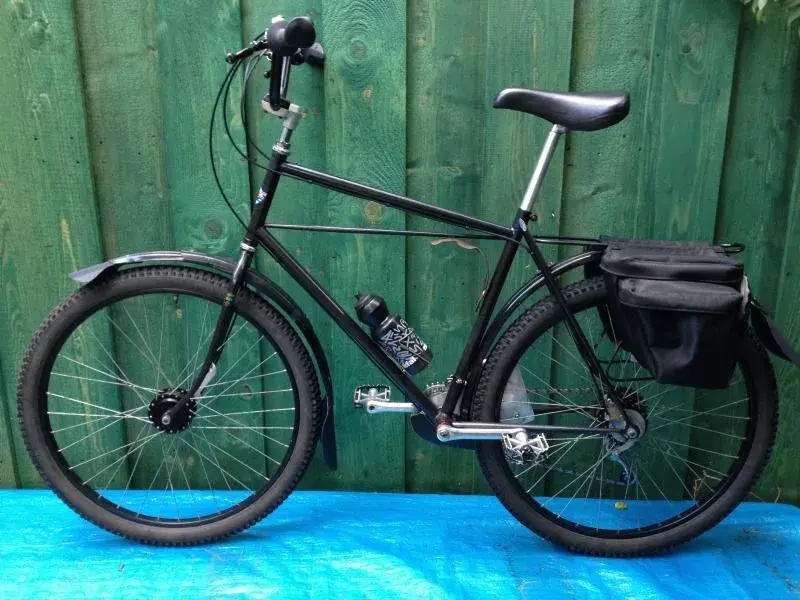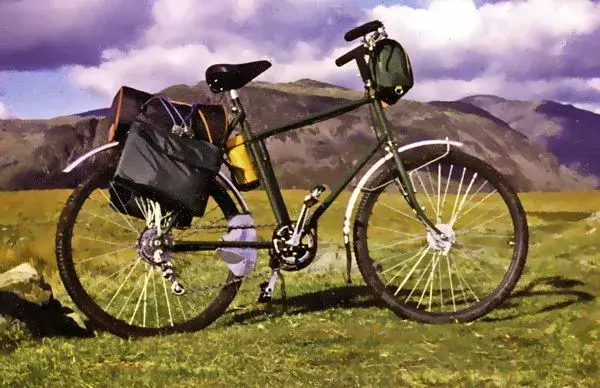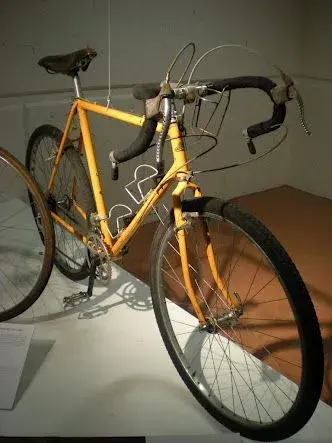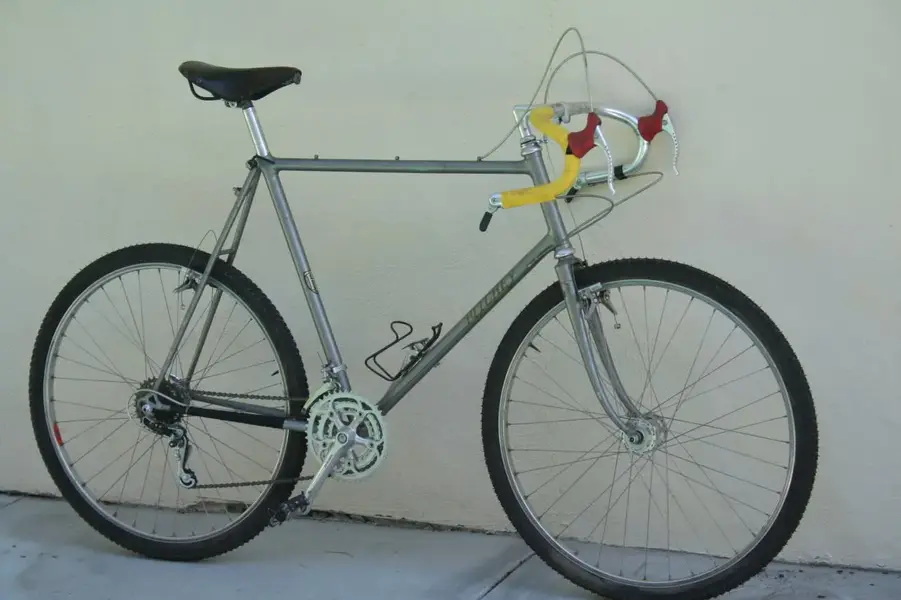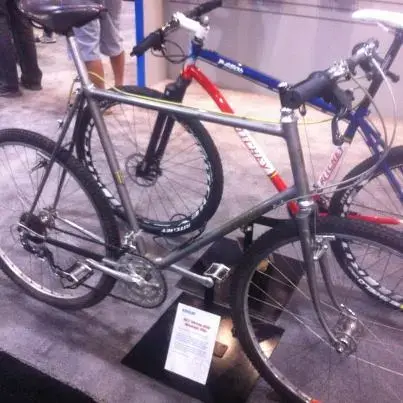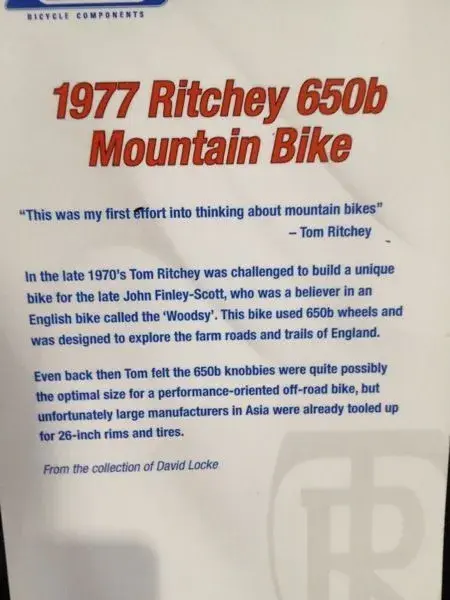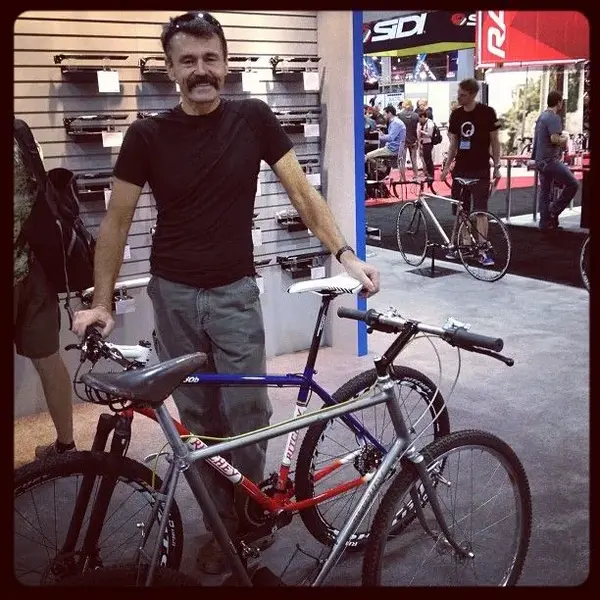You are using an out of date browser. It may not display this or other websites correctly.
You should upgrade or use an alternative browser.
You should upgrade or use an alternative browser.
Rewriting Mountain Bike History?
- Thread starter GrahamJohnWallace
- Start date
Chopper the ex Copper
Alpinestars Fan
^^^ No SPD s! Swoon!
- Feedback
- View
I have been doing some research into the how the Finnish infantry used bicycles.
Finland has very large areas of forest where there were/are very few roads and tracks. And being able to move quickly off-road in such terrain gave the Finns a distinct tactical advantage. This meant that in Winter the infantry used skis and in Summer they used bicycles. Photos of Finnish bicycle troops from WWll, where they were fighting off invasions from the Soviet Union, show the use of large wheeled, narrow tyred utility bicycles similar to those used by most armies. Though photos of modern Finnish bicycle troops show bikes with smaller 650b wheels and much fatter 54mm balloon tyres.
It therefore seems justified to speculate that during the years of the Cold-War there had been a re-evaluation, and resultant development in the design of Finnish Army bikes. This is unusual as most "Army Bikes" were just everyday bicycles and when specially produced this was to make them stronger and more mechanically robust. Someone in the Finish military must have concluded that fatter tyres were better. I doubt that this was to improve traction as the tyres shown in photos are only lightly treaded and the bikes were single speed where the practice would have been to get off and push or carry the bike through difficult terrain. I think it more likely it was to reduce rolling resistance when off-roading through the forests. However the evidence does not explain that the aggressively treaded Hakkapeliitta snow tyres developed between 1975 and 1982 were developed for military use.
Why develop snow and ice tryes when the troops used skis in Winter?
And why don't any of the many photos I have seen show the rugged Hakkapeliittas actually fitted to the bikes?
Finland has very large areas of forest where there were/are very few roads and tracks. And being able to move quickly off-road in such terrain gave the Finns a distinct tactical advantage. This meant that in Winter the infantry used skis and in Summer they used bicycles. Photos of Finnish bicycle troops from WWll, where they were fighting off invasions from the Soviet Union, show the use of large wheeled, narrow tyred utility bicycles similar to those used by most armies. Though photos of modern Finnish bicycle troops show bikes with smaller 650b wheels and much fatter 54mm balloon tyres.
It therefore seems justified to speculate that during the years of the Cold-War there had been a re-evaluation, and resultant development in the design of Finnish Army bikes. This is unusual as most "Army Bikes" were just everyday bicycles and when specially produced this was to make them stronger and more mechanically robust. Someone in the Finish military must have concluded that fatter tyres were better. I doubt that this was to improve traction as the tyres shown in photos are only lightly treaded and the bikes were single speed where the practice would have been to get off and push or carry the bike through difficult terrain. I think it more likely it was to reduce rolling resistance when off-roading through the forests. However the evidence does not explain that the aggressively treaded Hakkapeliitta snow tyres developed between 1975 and 1982 were developed for military use.
Why develop snow and ice tryes when the troops used skis in Winter?
And why don't any of the many photos I have seen show the rugged Hakkapeliittas actually fitted to the bikes?
Attachments
-
 0003h2dz.webp63.1 KB · Views: 922
0003h2dz.webp63.1 KB · Views: 922 -
 0003rdyd.webp73.6 KB · Views: 922
0003rdyd.webp73.6 KB · Views: 922 -
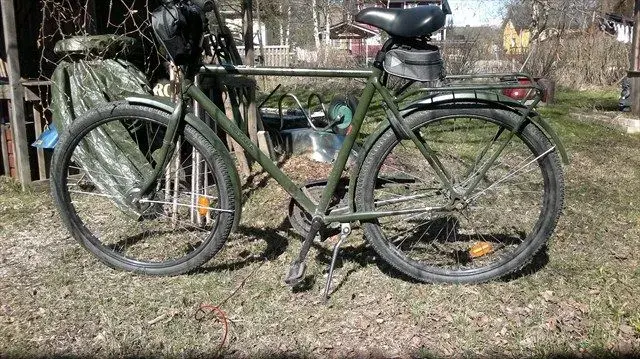 4b9d0667-1686-478c-814d-0cdfb979440f.webp94.5 KB · Views: 921
4b9d0667-1686-478c-814d-0cdfb979440f.webp94.5 KB · Views: 921 -
 finnish jaegers bike wwll.webp20.7 KB · Views: 922
finnish jaegers bike wwll.webp20.7 KB · Views: 922 -
 2109alasmt5p.webp52.3 KB · Views: 922
2109alasmt5p.webp52.3 KB · Views: 922 -
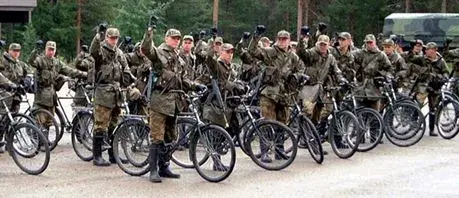 459x198xFinnish_Soldiers_with_Bicycles_2a.jpg.pagespeed.ic.wiAebJ6JjS.webp29.5 KB · Views: 923
459x198xFinnish_Soldiers_with_Bicycles_2a.jpg.pagespeed.ic.wiAebJ6JjS.webp29.5 KB · Views: 923
These may know the answers. http://www.helkamavelox.fi/en/models/me ... 3nhr_arv_k
Chopper the ex Copper
Alpinestars Fan
Those Finnish jobs kind of remind me of the Range Rider.
- Feedback
- View
Chopper1192":2eosm6c7 said:Those Finnish jobs kind of remind me of the Range Rider.
They certainly embody the utilitarian aspect of Geoff Apps' original design ethos as Apps never saw his bikes as anything more than practical and functional. I personally like the honest, no-nonsense nature of these bikes and feel sure that with the tyres run at suitably low pressures they would be comfortable and capable cross country or forest bikes over less hilly terrain. As such I would be happy to categorise them as honorary Clelands. The only reference I know of in Geoff's archive is a written reference from an 1980 magazine article on cycling in Finland, that reports ..."the Finish Army uses 2" tyres for Boondock bouncing" though the loss of efficiency on a good surface is high'. Whatever Boondock bouncing was?
Take a fat tyres 650x54B Finnish army bike:
*steepen the frame geometry
* shorten the wheelbase
*raise the bottom bracket height
*add some low-ratio wide range gears
*increase the mudguard/tyre clearances to about two inches
*instal some more powerful yet well modulated brakes
*throw in some 531 double butted tubing
And Voila! you have a Cleland.
I strongly suspect that had Geoff Apps known more about these bikes BitD, he would have tried to import some.
Attachments
- Feedback
- View
Re: Rewriting Mountain Bike History
It has been two years since it was first announced that Tom Ritchey made this 650b mountain bike in 1977. However, there is still no evidence whatsoever to corroborate the claim. Non of the other Marin mountain bike pioneers have said that they recall such a bike and Pioneer Charlie Kelly has said "If there was a 650B version of our bikes prior to 1979, I'm pretty sure I would have heard about it.
"http://www.retrobike.co.uk/forum/viewtopic.php?f=1&t=226245&start=20
It has also been noted that most of the parts fitted to the bike date from the 1980s and that the frame/fork details match Tom's 1980s bikes and not his first 26" wheeled bikes made in 1979.
No one is disputing that Tom Ritchey made some of the first ever 650b mountain bikes in the early 1980s, in fact this is well documented. But the 1977 date is important as October 1977 is the date of Joe Breeze's Breezer number 1, widely accepted to have been the first mountain bike with a custom built frame.
It is quite likely that the confusion could be caused by Tom making an English style 'Roughstuff' touring bike in 1977, as a few other US frame-builders definitely made such 650b wheeled bikes between 1965 and 1979 including at least one made for professor John Finley Scott. American bike shops also imported a few Jack Taylor 'Roughstuff' bikes from England. But unlike the bike shown at InterBike 2012, these bikes had narrow tires and drop handlebars and are not usually considered to be a type of mountain bike.
But for a pioneering mountain bike frame-builder like Ritchey to claim that a 650b 'Roughstuff' bike he made in 1977 was one of the first mountain bikes, would also infer that the mountain bike concept came from Britain.
It has been two years since it was first announced that Tom Ritchey made this 650b mountain bike in 1977. However, there is still no evidence whatsoever to corroborate the claim. Non of the other Marin mountain bike pioneers have said that they recall such a bike and Pioneer Charlie Kelly has said "If there was a 650B version of our bikes prior to 1979, I'm pretty sure I would have heard about it.
"http://www.retrobike.co.uk/forum/viewtopic.php?f=1&t=226245&start=20
It has also been noted that most of the parts fitted to the bike date from the 1980s and that the frame/fork details match Tom's 1980s bikes and not his first 26" wheeled bikes made in 1979.
No one is disputing that Tom Ritchey made some of the first ever 650b mountain bikes in the early 1980s, in fact this is well documented. But the 1977 date is important as October 1977 is the date of Joe Breeze's Breezer number 1, widely accepted to have been the first mountain bike with a custom built frame.
It is quite likely that the confusion could be caused by Tom making an English style 'Roughstuff' touring bike in 1977, as a few other US frame-builders definitely made such 650b wheeled bikes between 1965 and 1979 including at least one made for professor John Finley Scott. American bike shops also imported a few Jack Taylor 'Roughstuff' bikes from England. But unlike the bike shown at InterBike 2012, these bikes had narrow tires and drop handlebars and are not usually considered to be a type of mountain bike.
But for a pioneering mountain bike frame-builder like Ritchey to claim that a 650b 'Roughstuff' bike he made in 1977 was one of the first mountain bikes, would also infer that the mountain bike concept came from Britain.
Attachments
Repack Rider
Senior Retro Guru
I met Tom Ritchey in 1979. I have no opinion on this.
We_are_Stevo
Old School Grand Master
- Feedback
- View
Re:
Oh well, at least we have an Englishman to thank for inventing the internet so we can all disagree with anything we don't like!
Oh well, at least we have an Englishman to thank for inventing the internet so we can all disagree with anything we don't like!
- Feedback
- View
Thanks for the clarification on this Charlie.Repack Rider":3m1m8a3r said:I met Tom Ritchey in 1979. I have no opinion on this.
The most interesting question here is, did the existence of 'Roughstuff' bikes in California have any influence on the development of the mountain bike?
Whilst the mountain bike's fat tyres and sturdy frames have definite American roots from the Schwinn Excelsior and similar bikes, the lightweight frames, Alpine gear systems and cantilever brakes all have European origins. How did the US pioneers learn about these components etc? And how influential was the existence of US Roughstuff bikes?
These English 'Woodsie' bikes were definitely important to the first of the US pioneers, John Finley Scott.
And judging by the wording of the 1977/650b claim, they also turned Tom Ritchey onto the possibilities of off-road cycling.
Attachments
Similar threads
- Replies
- 17
- Views
- 2K
- Replies
- 161
- Views
- 25K
- Replies
- 31
- Views
- 11K

